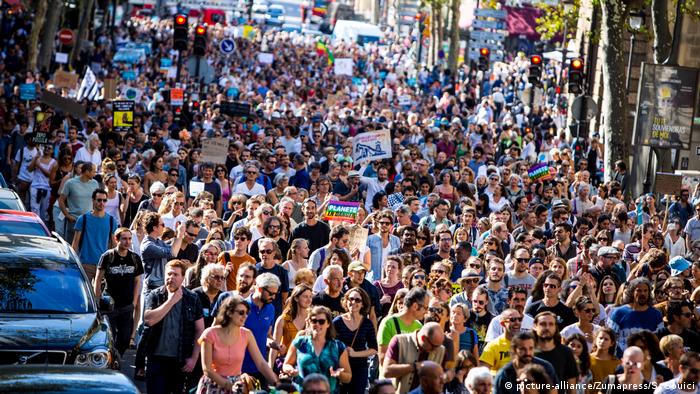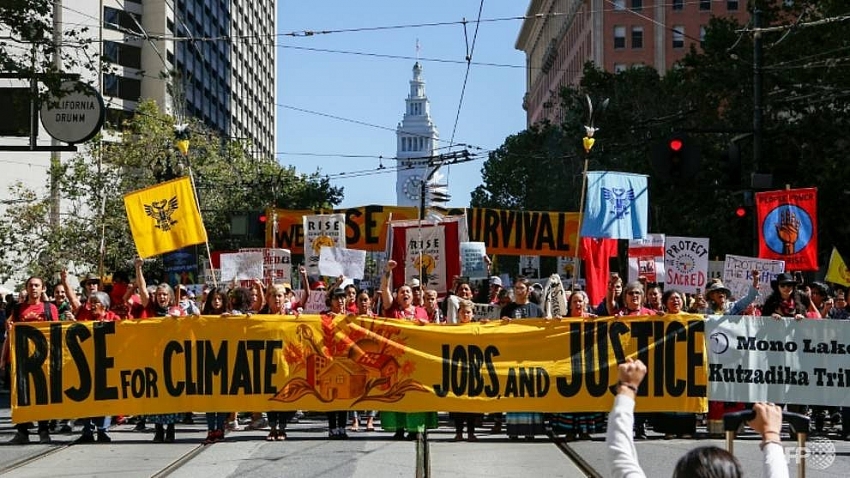In Europe this month, extremely high temperatures over 45 degrees Celsius associated with global warming contributed to health emergencies, intense forest fires, the closing of nuclear reactors, tornadoes and loss of lives. ...
Portugal: The mercury was expected to climb to 45C in some parts of Portugal on Sunday, but would not go above the 46.8C recorded the day before in Alvega, 93 miles north of Lisbon, the Portuguese Institute for Sea and Atmosphere said. ... However a forest fire continued to rage on two fronts in Monchique in the country’s south on Sunday. Nearly 780 firefighters, supported by 200 vehicles and 10 water-dropping planes and helicopters were working to put it out, the civil protection agency said.
Spain: A top of 42C was forecast in the southwest region of Extremadura on Sunday, where a wildfire in San Vicente de Alcantara has been brought under control by firefighters, the local fire service said. The mercury had reached 44C in the country’s south on Saturday, the Spanish Meteorological Agency said. The rise in temperatures has already claimed the lives of three people who died of heatstroke this week.
France: In France, 67 out of 101 departments were on heatwave alert with temperatures in the south of the country expected to again peak near 40C. Saturday was the hottest day in the country since the infamous heatwave of 2003, in which thousands of people died, many of them elderly people living on their own. ... Four nuclear reactors remained closed Sunday over the blazing temperatures. Power company EDF said the measures were taken to avoid temperature hikes in rivers from which water is drawn to cool the reactors.
https://metro.co.uk/2018/08/05/europe-hits-45c-heatwave-reaches-swelteri...











